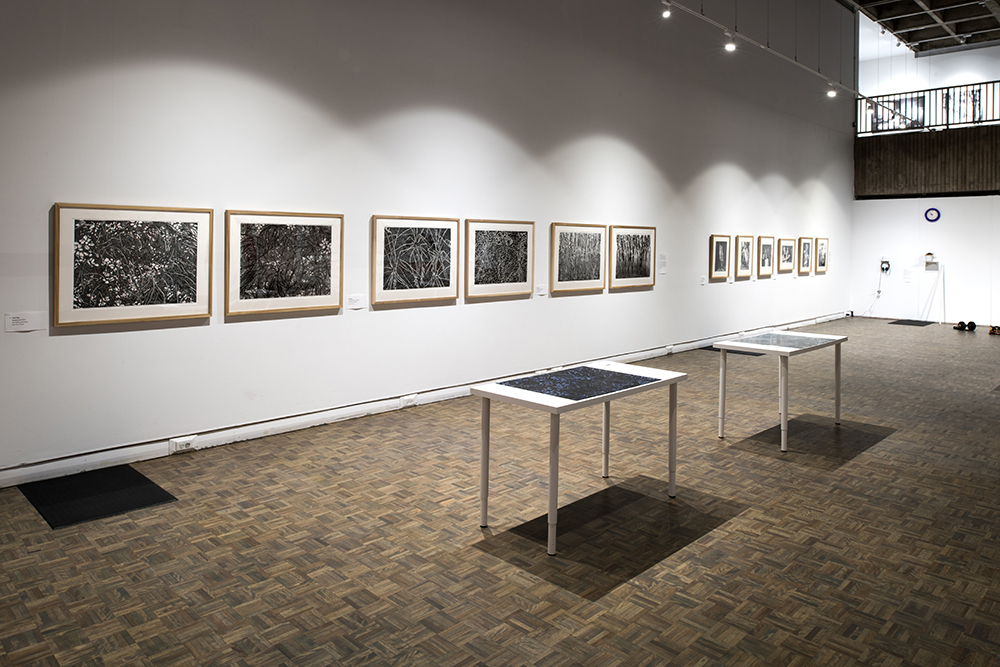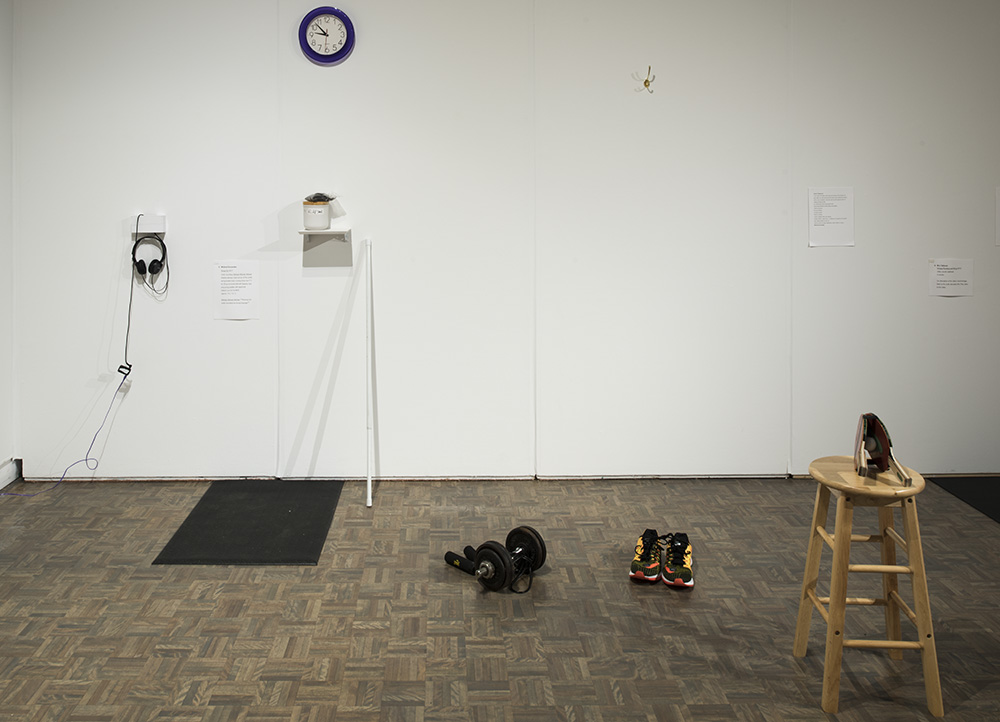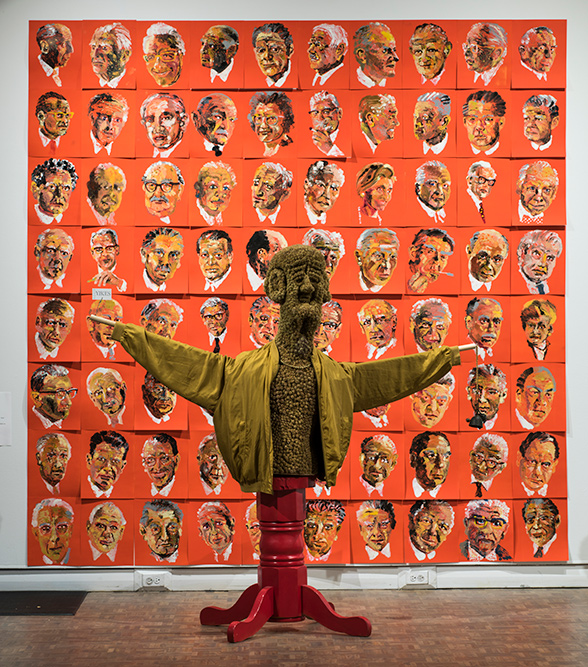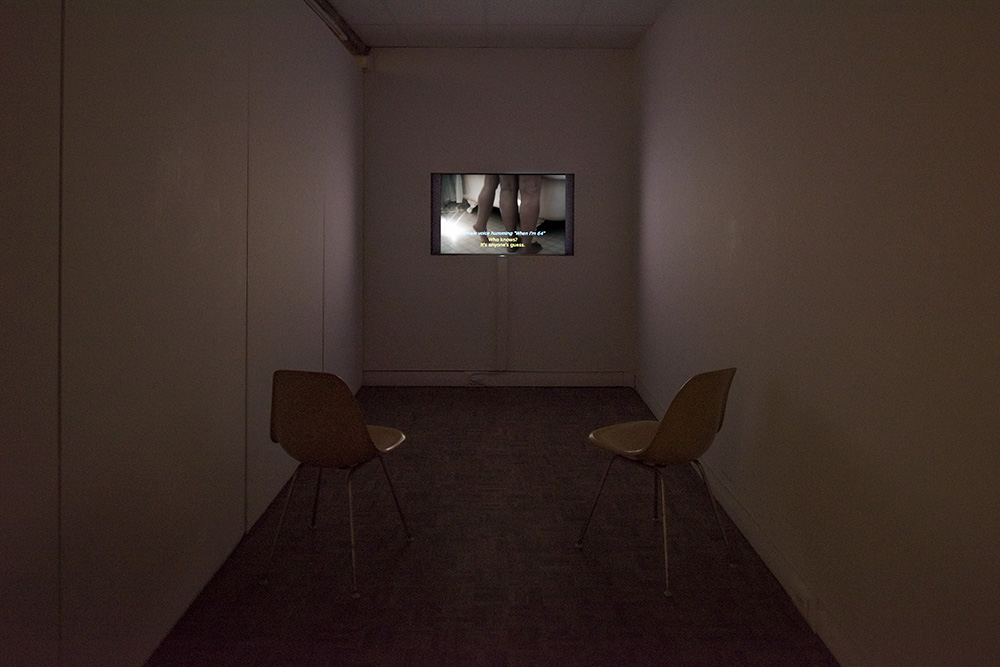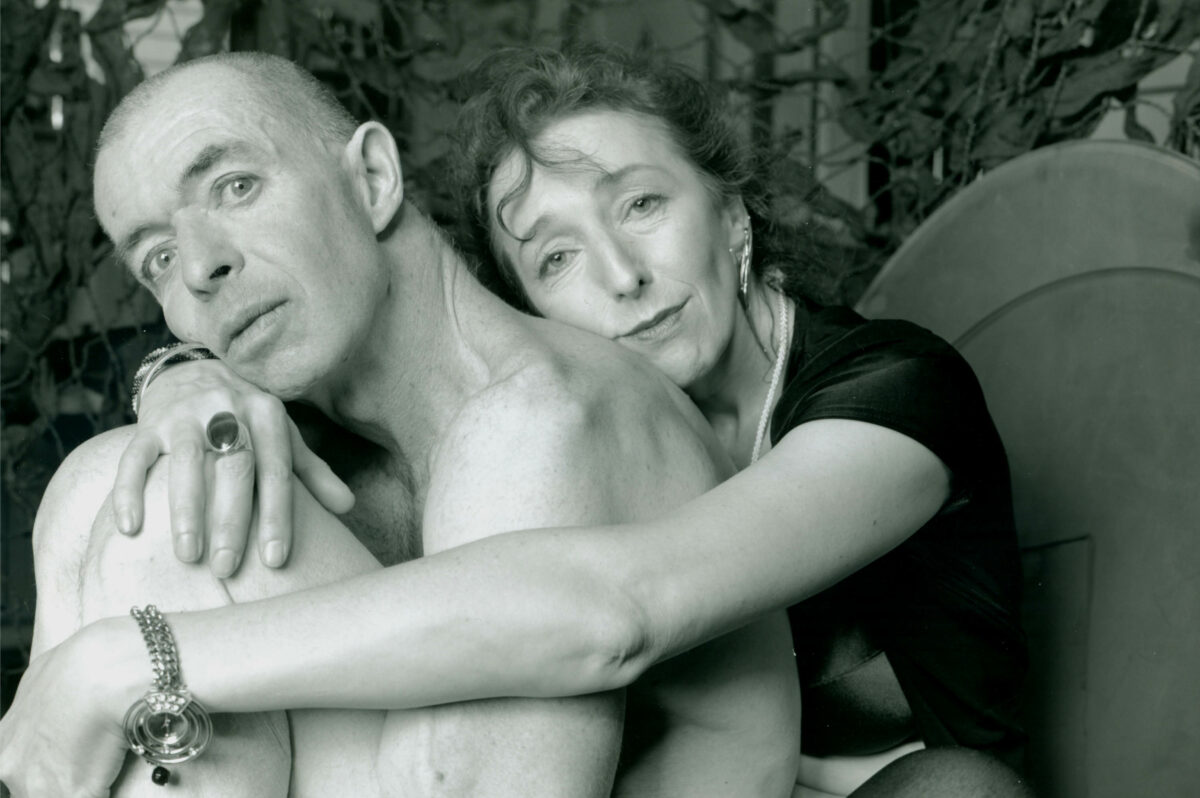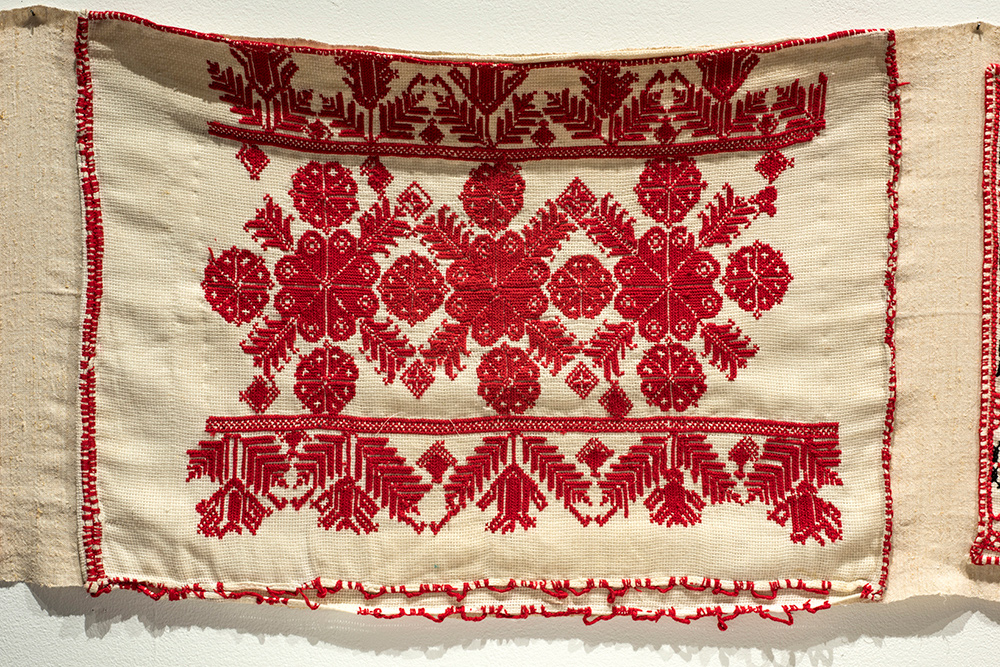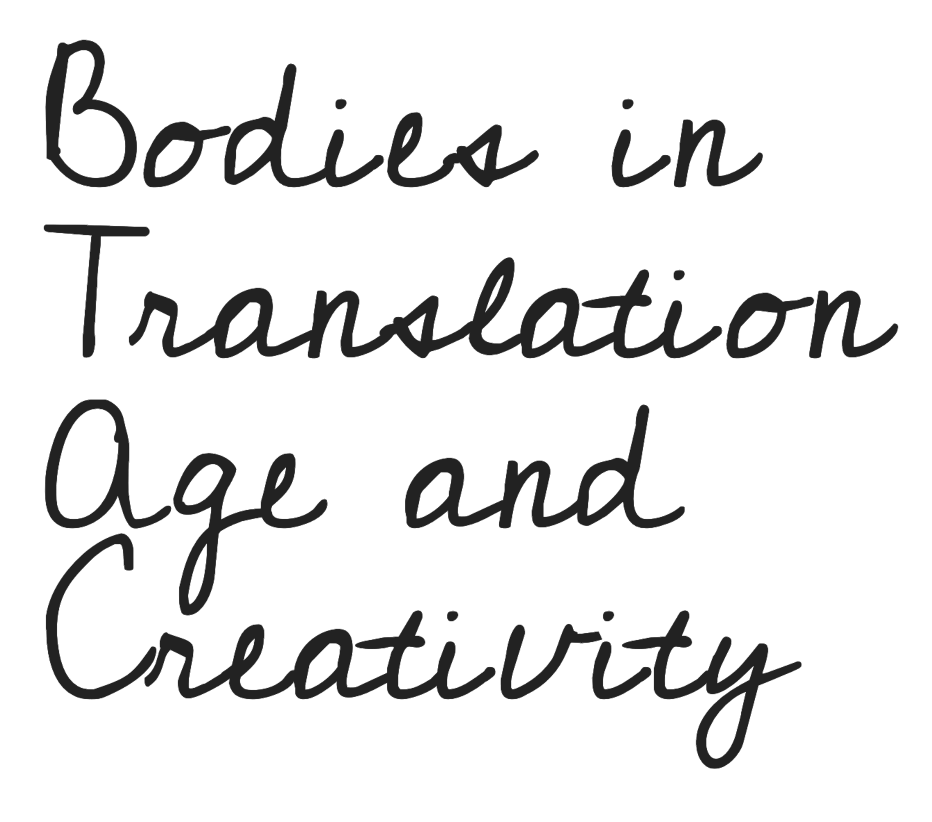
Bodies in Translation: Age and Creativity was exhibited at MSVU Art Gallery from September 9 to November 12, 2017. It brought together artists from the Atlantic region whose work challenged assumptions about aging and explored the lived experience of aging as it relates to identity, culture, embodiment, sexuality and disability.
This exhibition was co-produced in partnership with MSVU Art Gallery, Nova Scotia Centre on Aging (NSCA) and Bodies in Translation: Activist Art, Technology and Access to Life, a SSHRC-funded research project at Re•Vision: The Centre for Art and Social Justice at the University of Guelph.
About the Exhibition
Bodies in Translation: Age and Creativity brought together artists from the Atlantic region whose work challenged assumptions about aging and explored the lived experience of aging as it relates to identity, culture, embodiment, sexuality and disability.
Artists’ work in the exhibition addressed how experiences that come with age, such as aging with and into disability, can inspire alternate forms of embodiment, culture and art practice. For example, in what ways does aging shape an artist’s practice? Or alternately, how does artistic practice shape how we relate to aging? And how do social and cultural expectations shape our experience of aging?
The exhibit was part of the Nova Scotia Centre on Aging’s (NSCA) 25th Anniversary celebrations and is a partnership between MSVU, NSCA and Bodies in Translation (SSHRC-Funded Partnership Project).
With an accessible curatorial contribution from Bodies in Translation: Activist Art, Technology, and Access to Life, Bodies in Translation: Age and Creativity animated and reflected a commitment to imagining art and creative space as a site of social transformation. The exhibition was organized and presented to the public with an inclusive framework.
Foreword by Ingrid Jenker
The exhibition Bodies in Translation: Age and Creativity was organized by MSVU Art Gallery in collaboration with the SSHRC-funded project entitled Bodies in Translation: Activist Art, Technology and Access to Life and the Nova Scotia Centre on Aging at Mount Saint Vincent University. I had the honour of serving as co-curator of the exhibition, together with Lindsay Fisher and Dr. Eliza Chandler, who are associated with the Bodies in Translation research team.
Bodies in Translation: Age and Creativity was presented at MSVU Art Gallery, Halifax, from 8 September through 12 November 2017. These dates encompassed the twenty-fifth anniversary of the founding of the Nova Scotia Centre on Aging and the first day of October, the International Day of the Older Person.
Age and Creativity was a novel undertaking for the staff of MSVU Art Gallery. We had previously exhibited the work of older visual artists in solo and group exhibitions, but never with aging as a theme. The project’s stated focus was “on socially engaged creative work by artists who embody difference” and works addressing “various facets of aging, including disability.” As we formulated our invitation to potential contributors, a question hung over our discussions: would artists want to participate?
The curators decided to select the exhibition from a public call for entries, which was issued to artists and artists’ organizations throughout Atlantic Canada. There was no age threshold—we invited entries from professional artists and artisans who identified as “older adults” and whose practices engaged in some way with the topic of aging. The choice of media was completely open. The key selection criteria were aesthetic merit and diversity of perceptual access.
From the twenty-nine entries received, we selected the works of seven artists. I was pleasantly surprised to observe that even this small number incorporated a balance of established and emerging artists, and various demographic categories. For example, both Karen Langlois and MJ Sakurai began their artistic careers later in life. Four of the artists are immigrants. Anna Torma came to New Brunswick from Hungary, Cecil Day and MJ Sakurai moved to Nova Scotia from the U.S., and Michael Fernandes traveled to Montreal from Trinidad, later settling in Nova Scotia. Both Fernandes and Sakurai are persons of colour. Only Onni Nordman and George Steeves are native Maritimers. With the exception of Cecil Day, who disclosed her arthritis, none of the artists claimed a specific disability—but all acknowledged how age had transformed them and their relationships with the people portrayed in their works.
This project also transformed the curatorial approach to public programs at MSVU Art Gallery. Until Age and Creativity, we had never systematically undertaken to make an exhibition accessible to persons with disabilities. The preparations for mounting Age and Creativity convinced us that accessible presentation practices would characterize our public programs for the foreseeable future.
Here is a list of accessible features of the exhibition Bodies in Translation: Age and Creativity (and subsequent exhibitions):
- Specialized gallery attendants trained in disability awareness and verbal description
- Large print wall labels and interpretive guide booklet
- Braille interpretive guide booklets, grades 1 and 2
- Audio-recorded verbal descriptions, in the artists’ voices, on portable players with headphones
- ASL video of the introductory text panel
- ASL interpreters present at public events
- Touchable art
- Touchable printing plates exhibited alongside the framed prints
- Wall-mounted and table-mounted works and texts positioned at wheelchair-accessible height
- Closed-captioned video
- List of accessible facilities in the building posted in the exhibition
- Service animals welcome
Unfortunately we were unable to manage this until after the exhibition closed, but I am pleased to announce that automatic door openers have been installed at three critical entrance points to the gallery.
Ingrid Jenkner, Director
MSVU Art Gallery
Curatorial Statement by Eliza Chandler
This exhibition animates an ongoing interest in interrogating, rather than taking for granted, the ways that bodies and art interact. Buoyed by the lessons passed down from disability arts, we, the curators of this exhibition, specifically sought out work by aging artists who wittingly, subversively, subtly, whimsically, intimately, and culturally animate the particular interaction between aging bodies and the artistic process.
These interactions are multiplicities, as you’ll experience as you explore this exhibition; as diverse as the art and the (aging) artists behind the work. The binding thread between these works is the provocation for us to consider the dynamic ways that aging invigorates art-making as well as the art that is produced.
As the collected work in this exhibit demonstrate, aging, particularly into a world wherein our presence is increasingly unexpected, is, perhaps, always a creative act.
The stories unfolded by these works enliven how our embodiments shift with age. These shifts may conjure the need for assistive devices that can only be found in objects repurposed to serve a particular or personalized need or even desire, as Fernandes offers in his installation and performance. The aging process also may require shifts in how we present ourselves to, and are present within, the world in manners that are less obscured and more purposeful than they might have once been, as Steeves photographs gesture towards. As is captured in Sakuai’s video, these shifts may propel us out of the expectedly impassioned body and into a body that is intimate in unexpectedly delightful ways. The contemplative time that aging allows for also opens a space to engage in the heuristic quandary of how things—cultural values, political landscapes, and ourselves—change as much as they stay the same over a lifetime. Aging, or living on into the future, allows for reflections on the passage of time and its effects on the bodymind, a theme which is particularly poignant in Langiois’s book-object. The privilege of aging may also give us time and space to revisit family histories, allowing new meaning of the collective travel of migration and settlement to emerge, as is revealed in Torma’s textile assemblage. Broadening the question from the personal to the social, Nordman’s installation causes us to wonder how labour relations, political power, and cultural hegemonies shift and also remain unchanged, meditating on the reflective and also, in this context, nihilistic question of, “has one grown old without growing up?” As all of these works demonstrate, and as Day’s etching as well as her ongoing practice punctuates, the creative act of aging may indeed change how we approach our work but it does not have to altogether foreclose the possibilities of making.
In all of these material and procedural ways, these works open up dialogues on histories and futurities from a distinctly aging perspective, illuminating them as collective dialogues in ways that only art can.
August 2017
Acknowledgements
The Art Gallery’s journey to greater inclusiveness was launched in fall 2016, when the Nova Scotia Centre on Aging invited MSVU Art Gallery to collaborate in the organization of an exhibition on the subject of aging. At the NSCA I would like to thank Katie Aubrecht, Postdoctoral Fellow; Pamela Fancey, Associate Director; and Janice Keefe, Director, for their collegial support of the exhibition and associated events.
The staff of MSVU Art Gallery also helped to realize many of the accessible supports. David Dahms, Technician, and Traci Steylen, Administrative Assistant, worked tirelessly on this aspect of the exhibition. Claire Dykhuis, Program Coordinator, hired and trained our specialized attendants, oversaw the production of printed matter, and coordinated the collection of visitor feedback. In these efforts all of the staff were guided by our temporary Accessibility Coordinator, Nicole McDonald, who brought considerable life experience and theoretical knowledge of accessibility to her task. Julianne Acker-Verney, a consultant specializing in supports for blind people, helped us to introduce Braille into the exhibition.
The most popular accessible feature of the exhibition was the presence of our gallery attendants, Rachel Cherry, Courtney MacDonald, Robyn MacKinnon, Kelsey McLaughlin and Anna Taylor. By providing an actively inclusive welcome to the exhibition space, these employees have redefined what it means to be a galley attendant at MSVU Art Gallery.
I am especially grateful to the participating artists, who not only contributed their art, but also took the trouble to record audio descriptions according to accessible protocols. Their recordings were the second most popular accessible support, providing an intimate glimpse into their intentions and artistic personae.
Finally, thanks to my co-curators, Eliza Chandler and Lindsay Fisher. As knowledgeable colleagues, they guided the exhibition planning process at every stage, assisted in the mounting of public events, and educated everyone and anyone who needed to learn more about accessible curatorial practices.
Exhibition Accessibility
Here is a list of accessible features that were incorporated into the exhibition and will continue to be put into practice with future exhibitions at MSVU Art Gallery:
- Specialized gallery attendants trained in disability awareness and verbal description
- Large print wall labels and interpretive guide booklet
- Braille interpretive guide booklets, grades 1 and 2
- Audio-recorded verbal descriptions, in the artists’ voices, on portable players with headphones
- ASL video of the introductory text panel
- ASL interpreters present at public events
- Touchable art
- Touchable printing plates exhibited alongside the framed prints
- Wall-mounted and table-mounted works and texts positioned at wheelchair-accessible height
- Closed-captioned video
- List of accessible facilities in the building posted in the exhibition
- Service animals welcome
Press
This video features Accessible Media Inc’s coverage of the Bodies in Translation: Age and Creativity exhibition. In the video, journalist Laura Bain explores aging, identity, sexuality and disability through her experience of the artwork.
Photography courtesy of Bodies in Translation: Activist Art, Technology & Access to Life, Re•Vision: The Centre for Art & Social Justice at the University of Guelph.









